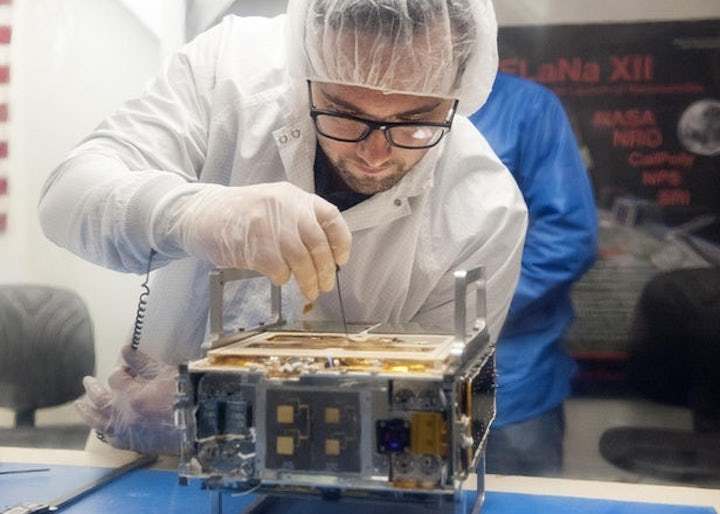22.04.2018

Artist's rendering of the twin Mars Cube One (MarCO) spacecraft as they fly through deep space(Credit: NASA/JPL-Caltech)
-
When NASA's InSight mission to Mars lifts off on May 5, it won't be alone. Nestled inside the Atlas V launcher on the aft bulkhead carrier of the Centaur upper stage will be two CubeSats that will make up the Mars Cube One mission, or MarCO. The 14.4 x 9.5 x by 4.6 inch (36.6 x 24.3 x 11.8 cm) miniature spacecraft will be the first CubeSats to be deployed into deep space, and will demonstrate new technologies for future interplanetary missions.
First announced in 2015, the MarCO probes were built at NASA's Jet Propulsion Laboratory and, though they will be launched with InSight, they are not a direct part of the lander mission. Instead, their primary purpose is to see if CubeSats can survive the harsh conditions of an extended deep space mission and still perform tasks when they arrive at their destination.
In the case of MarCO, the primary mission objectives are to deploy their solar panels and high-gain antenna, maintain contact with mission control back on Earth, survive the passage to Mars, and then monitor transmissions from the InSight spacecraft as it descends to the surface of the Red Planet. Other than that, neither CubeSat carries any scientific instruments. NASA is leery of their chance of survival, and that's why it's sending two spacecraft – nicknamed "Wall-E" and "Eva" – in the hope that at least one will make it.

Since the MarCO mission is a ride-along, it's already facing its first challenge. The probes have sat switched off in their special dispenser since they were last checked by Tyvak Nano-Satellite Systems in March. NASA says it's unclear if the rechargeable lithium-ion batteries will have enough energy in them to active the miniature probes when they're released, or if they'll have to wait until their solar panels come online to activate the radios aboard.
Originally, CubeSats were developed as an educational tool to teach students how to design and build satellites. Today such satellites are big business, used in everything from research to ship tracking, but deep space is a harsher very different place that requires some basic rethinking of their design.
Not much larger than a couple of loaves of bread, the MarCO-A and MarCo-B CubeSats will be deployed after InSight lifts off. About 10 minutes after release, the craft will open their 12 x 12 in (30 x 30 cm) solar panels, which will generate between 35 and 17 watts of electricity, depending on how far they are from the Sun.

Radio contact with mission control will be through NASA's Deep Space Network using a high-gain X-band antenna – a flat "reflectarray" panel that uses a sculpted array to focus radio waves like a parabolic dish. It's the radio equivalent of a Fresnel lens, which uses an etched, flat transparent surface to do the job of an optical lens. The spacecraft will also monitor the UHF radio band used by InSight.
To keep the MarCO spacecraft pointed at Earth, each is equipped with gyroscopes and reaction wheels to keep them stable and cold-gas thrusters that use compressed R236FA hexafluoropropane gas for course corrections. In addition, there are heaters, multiple temperature sensors, thermal blanketing, and two radiators for thermal control to protect the probes from the extreme temperatures of heat and cold.

If the MarCO probes survive and arrive at Mars on November 26, 2018, they will be able to monitor InSight as it descends, but they will not go into orbit around Mars. Instead, they will execute a flyby trajectory and go into orbit around the Sun. During the flyby, the spacecraft will have to rely on their batteries for power because their panels won't always be pointed at the Sun, but they will (hopefully) be beaming data back to Earth as its relayed from InSight at a rate of 8 kilobits per second.
"These are our scouts," says Andy Klesh of JPL, MarCO's chief engineer. "CubeSats haven't had to survive the intense radiation of a trip to deep space before, or use propulsion to point their way towards Mars. We hope to blaze that trail."
Quelle: NEW ATLAS
